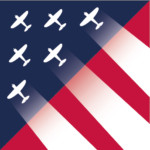History Presentation and P-38 Flight Demonstration The 39th Fighter Squadron in New Guinea – The Cobras in the Clouds
Saturday, July 13, 2024
Doors Open at 8am Presentation Starts at 9am
After December 7th, 1941, the U.S. was on the defensive everywhere in the Southwest Pacific. The Allies were desperate to hold the line against Japanese efforts to occupy New Guinea and threaten Australia. The U.S. Army Air Force and Royal Australian Air Force were outnumbered and outgunned in the early stages of the campaign but scrambled quickly to bring new resources into the fight to stop the Japanese onslaught. The 39th Fighter Squadron was one of the first units assigned to the Southwest Pacific campaign by the U.S. Army Air Forces and quickly established itself as one of the top air-to-air combat units early in the war against Japan.
The 39th was initially equipped with the P-39 that lacked high altitude performance. The 39th’s pilots were hard-pressed to defend the main New Guinea base at Port Moresby from Japanese attacks with this aircraft. That changed in the fall of 1942 when the 39th was re-equipped with the P-38 Lightning, the USAAF’s best high attitude fighter at the time. The 39th then dominated air-to-air action until late 1943 when it transitioned to the P-47 Thunderbolt and its mission changed. At one point in May 1943, the 39th had six aces among its pilots. Dick Bong, America’s leading ace of all time, flew for the 39th. Tommy McGuire with his 38 victories also flew with the unit for a time. Both were awarded the Medal of Honor.
On Saturday, July 13th, 2024, at 9:00, museum curator and historian Gene Pfeffer will tell the story of the 39th and its special place in air power history. Weather permitting, the presentation will be followed by a flight demonstration of the museum’s own restored P-38F, called White 33. It flew with the 39th during combat in late 1942 and was credited with at least two aerial victories.
Six aces of the 39th Fighter Squadron USAAF photo


